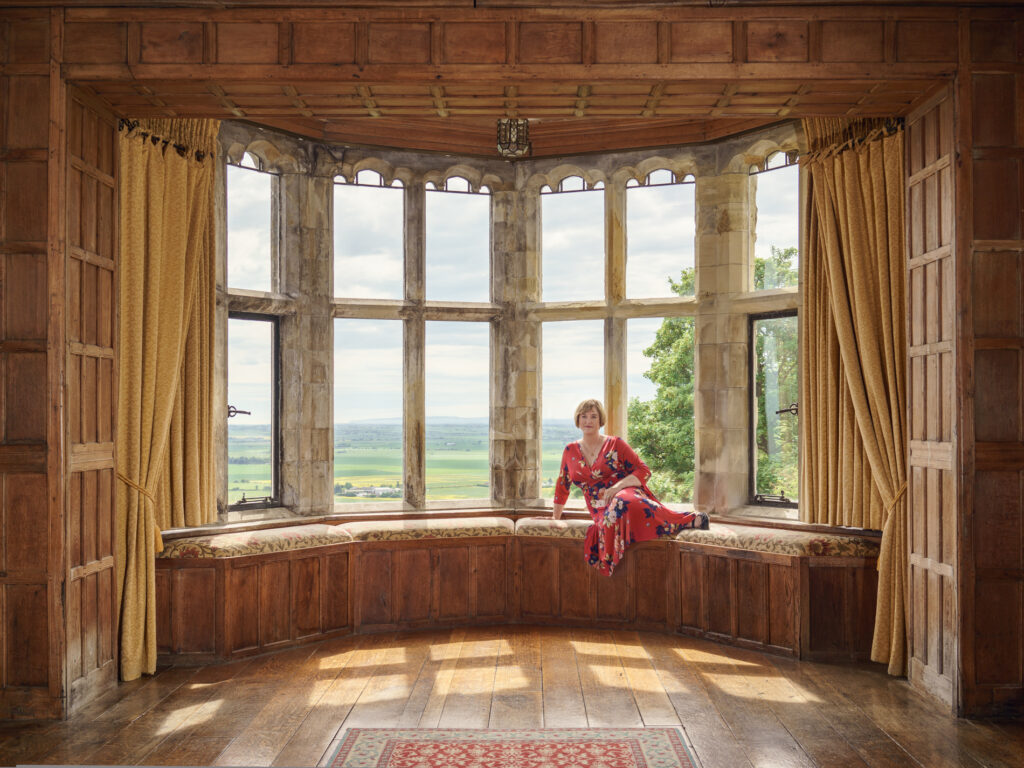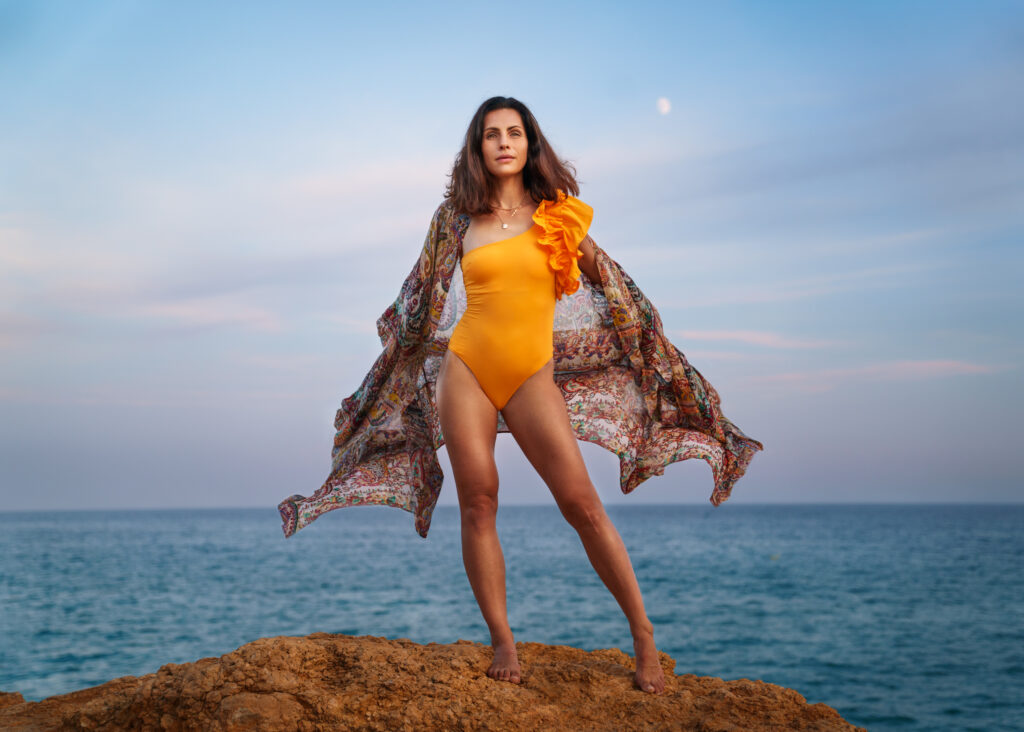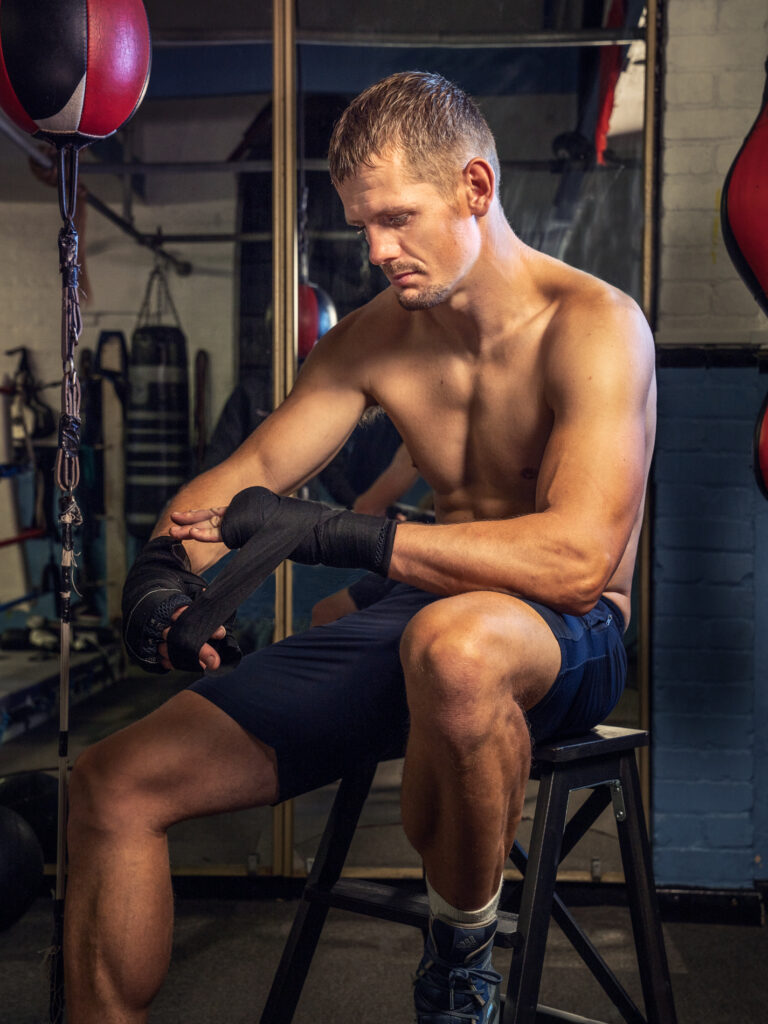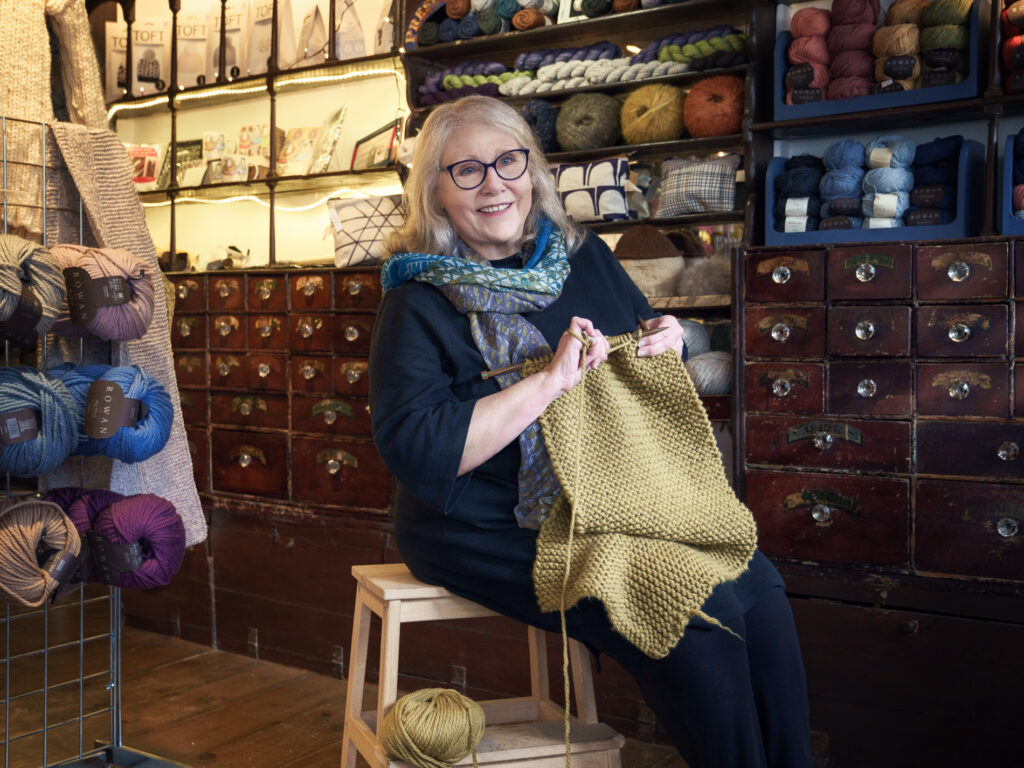Bigger Setting, Better Stories
Portraits that include the setting are more memorable because they tell a bigger story and stories help us remember.
Single Frame Stories
Photographs are supposed to be single frame stories. We should be able to build a bigger picture of who the person is and what’s going on from a single image. We want to avoid making images feel busy, but we do want them to communicate with our viewers.

This photograph shows Karina in a castle in Kent where a lot of weddings are held. Karina’s a wedding business mentor and so it’s fitting that she should be in a setting like this – it’s part of her brand.
The Viewer is Part of the Story
The viewer is as important to the story as the photographer. Every viewer brings their own history to an image just as they do to a book. When my husband read Catcher in the Rye in his youth he saw a boy disillusioned with the world and on the run from authority figures. I saw a boy struggling with the death of his brother. Why? Because we both brought our individual histories to the story.
It’s the same with images. We connect with what we know so we have to know who our audience is.
What the Setting Contributes
Studio portraits remove the background so we can focus on the individual. This is great when that’s all the image is about. We often like a bit more information though and including the setting helps you do that.

Even a relatively simple setting like the one above carries so much more weight than a plain studio backdrop. I’ve placed Daria up on a high rock with the Mediterranean behind her at sundown and you can even see the moon peeking through. I’ve removed all other distractions like swimmers and buoys in the sea.
The fact that the horizon line is low in the image tells you she’s elevated and that elevation is, in part, what gives her an air of confidence and authority – she feels as though she’s on top of the world.
Close Portraits
You don’t have to sacrifice that close up portrait feel just because you’re not in the studio.
In this image of Alex, I wanted the intimacy of a studio feel, but I also wanted to show where he trains because it’s so much a part of his narrative. So, I’ve used the mirrors behind to include what’s in front of him, as well as making him large in the frame. Without thinking about it you can you can see he hasn’t had a large training facility, but it hasn’t held him back, as you can see from his incredible body. Alex is in fact the first professional boxer from Faversham in 60 years. He’s done it with a remarkable coach, training in a small, slightly dilapidated building that floods a few times a year.

Busier Locations
On the whole, I suggest keeping the background quite simple, but there are occasions where a busy setting is part of the story. In this image of Vanessa, there’s a lot of yarn, but that’s the point because she runs a yarn shop. However, she’s the only person. Our focus is drawn to the people in an image and so she remains central to the photograph.
Placing Vanessa in her natural surroundings, in the shop she owns and runs knitting classes from, tells you so much. We know that she works from a building with history (from the rows of old drawers), it’s a yarn shop and she’s a knitter herself so you can trust her advice.

How the Viewer Builds Stories
We gradually build up a picture of a person not just from what they’re wearing, their hair and makeup, their expression, but also from where they situate themselves. We look for clues about people in the whole image and because we are The Story Telling Animal, we weave a story out of the clues.
Location portraits require more planning than studio and you are subject to the weather if they’re outdoors. However, they feel more natural and, most importantly, they build the all important sense of story.
For help creating portraits for you or your business in a setting that expands your story, please email nina@ninacarrington.com for a free consultation.
